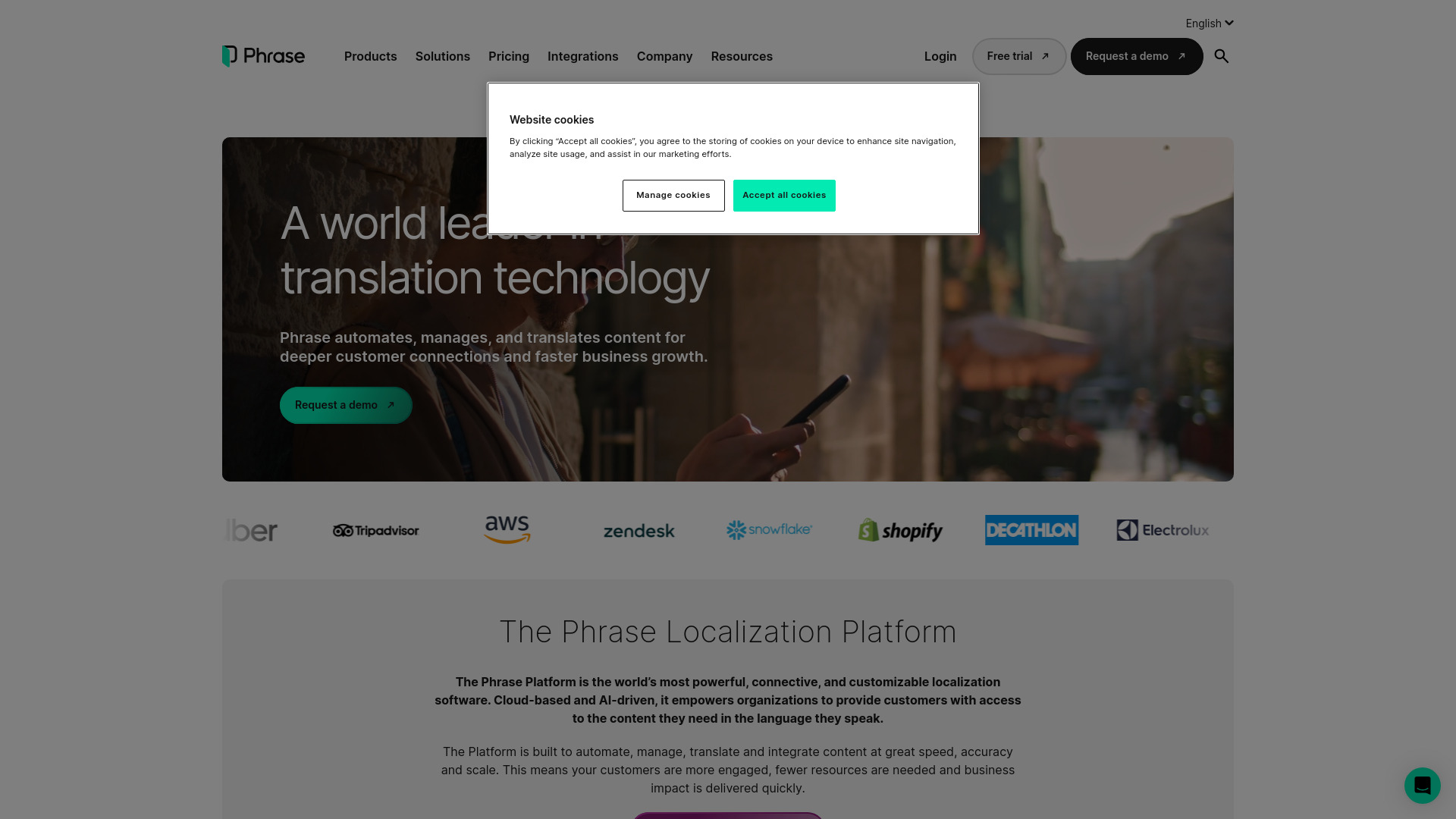- Home
- No-Code&Low-Code
- Phrase

Phrase
Open Website-
Tool Introduction:Kling AI: text‑to‑video studio with APIs for script, storyboard, render.
-
Inclusion Date:Oct 21, 2025
-
Social Media & Email:
Tool Information
What is Phrase AI
Phrase AI is the intelligence layer of the Phrase localization platform (formerly Memsource), designed to automate, manage, and deliver multilingual content at scale. It unifies AI translation, a robust translation management system, and software localization in a single cloud workspace. With workflow automation, a translation portal for stakeholders, and integrations across your tech stack, Phrase AI accelerates turnaround while improving consistency via translation memory, terminology management, and quality insights—helping teams ship global-ready content faster.
Phrase AI Main Features
- AI translation orchestration: Route content to the best-fit machine translation engine, with configurable rules by domain, language, or content type.
- Translation memory (TM): Reuse approved segments to cut costs and ensure consistency across product, marketing, and support content.
- Terminology management: Centralize glossaries and enforce brand and technical terms with automated term checks.
- Quality prediction and QA: Surface risky segments, prioritize reviews, and apply automated linguistic and formatting checks.
- Software localization: Manage UI strings, keys, and variants with in-context previews for web and mobile apps.
- Translation portal: Collaborate with vendors, reviewers, and in‑house teams through a streamlined, role-based workspace.
- Workflow automation: Build multi-step workflows with triggers, assignments, and handoffs to reduce manual tasks.
- Connectors and integrations: Sync content from repositories, CMS, help desks, and design tools for continuous localization.
- API and CI/CD: Use API and automation hooks to localize at build time and deliver updates continuously.
- Analytics: Track throughput, cost savings, quality trends, and time-to-market to optimize localization ROI.
Who Is Phrase AI For
Phrase AI is ideal for localization managers, product and engineering teams, content and marketing teams, customer support leaders, and language service providers. It supports use cases ranging from software UI and mobile apps to e-commerce catalogs, knowledge bases, and marketing websites—any workflow that needs scalable, consistent, and automated multilingual delivery.
How to Use Phrase AI
- Set up your workspace and define target locales, roles, and permissions.
- Connect content sources (e.g., repositories, CMS, design tools) or import files.
- Create translation memories, term bases, and style guidelines for consistency.
- Configure workflows with steps for AI pre-translation, review, and QA checks.
- Select MT engines and routing rules appropriate to your languages and domains.
- Assign tasks to linguists or vendors via the translation portal and track progress.
- Review flagged segments, apply terminology, and run automated QA.
- Publish translations back to source systems; automate via API or connectors.
- Monitor analytics to refine engines, workflows, and resources for continuous improvement.
Phrase AI Industry Use Cases
E-commerce brands localize product catalogs and seasonal campaigns at high volume with AI pre-translation and TM reuse. SaaS teams continuously ship localized UI strings and release notes through repository integrations. Support organizations translate knowledge base articles and FAQs with glossary enforcement. Gaming and media teams handle frequent in-app updates with workflow automation and in-context review to protect tone, style, and player experience.
Phrase AI Pricing
Phrase AI is offered as part of the broader Phrase platform with tiered plans for teams and enterprises. Pricing typically reflects feature access, user seats, and usage needs, with options for scalable volumes and custom enterprise arrangements. Trials and tailored quotes are commonly available to align with your localization program.
Phrase AI Pros and Cons
Pros:
- All-in-one platform for AI translation, TMS, and software localization.
- Faster turnaround through automation and continuous localization.
- Stronger consistency with TM, terminology, and QA checks.
- Broad integrations and API support to fit existing workflows.
- Actionable analytics to optimize cost, quality, and speed.
Cons:
- Initial setup and workflow design can require time and expertise.
- Advanced features may be more than small teams need.
- MT output quality varies by language and domain; human review remains important.
- Managing connectors and governance adds operational overhead at scale.
Phrase AI FAQs
-
What makes Phrase AI different from basic machine translation?
It combines MT with translation memory, terminology, quality prediction, and workflow automation, so you get both speed and governance across end-to-end localization.
-
Can I use my preferred MT engines?
Yes. You can select and route between leading MT providers and configure rules by language, content type, or domain to maximize quality and cost-effectiveness.
-
Does Phrase AI support continuous localization?
Yes. Connectors, API, and CI/CD hooks enable automated pulls, pre-translation, reviews, QA, and pushes back to source systems for frequent releases.
-
How is terminology consistency enforced?
A centralized term base, automated term checks, and reviewer workflows ensure required terms and brand language are correctly applied.
-
Can non-technical stakeholders contribute?
The translation portal provides a focused interface for translators, reviewers, and subject-matter experts to collaborate without touching source systems.



